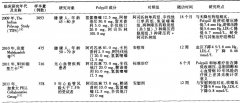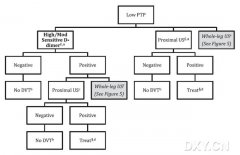读医学网
2010年美国中风协会脑出血治疗指南
发布时间:2014-05-19 10:34 类别:神经系统疾病 标签:clinical important http efforts 来源:丁香园
Spontaneous, nontraumatic intracerebral hemorrhage (ICH) is a significant cause of morbidity and mortality throughout the world. Although much has been made of the lack of a specific targeted therapy, much less is written about the success and goals of aggressive medical and surgical care for this disease. Recent population-based studies suggest that most patients present with small ICHs that are readily survivable with good medical care. This suggests that excellent medical care likely has a potent, direct impact on ICH morbidity and mortality now, even before a specific therapy is found. Indeed, as discussed later, the overall aggressiveness of ICH care is directly related to mortality from this disease. One of the purposes of this guideline, therefore, is to remind clinicians of the importance of their care in determining ICH outcome and to provide an evidence-based framework for that care.
In order to make this review brief and readily useful to practicing clinicians, the reader is referred elsewhere for the details of ICH epidemiology.Similarly, there are many ongoing clinical studies throughout the world related to this disease. The reader is encouraged to consider referring patients to these important efforts, which can be found at http://www.strokecenter.org/trials/. We will not discuss ongoing studies because we cannot cover them all; the focus of this statement is on currently available therapies. Finally, a recent guideline on pediatric stroke was published5 that obviates the need to repeat the issues of pediatric ICH here. The last ICH Guidelines were published in 2007,and this current article serves to update those guidelines. As such, differences from former recommendations are specified in the current work. The writing group met by phone to determine subcategories to evaluate. These included emergency diagnosis and assessment of ICH and its causes; hemostasis, blood pressure (BP); intracranial pressure (ICP)/fever/glucose/seizures/hydrocephalus; iron; ICP monitors/tissue oxygenation; clot removal; intraventricular hemorrhage (IVH); withdrawal of technological support; prevention of recurrent ICH; nursing care; rehab/recovery; future considerations. Each subcategory was led by an author with 1 or 2 additional authors making contributions. Full MEDLINE searches were done of all English-language articles regarding relevant human disease treatment. Drafts of summaries and recommendations were circulated to the whole writing group for feedback. A conference call was held to discuss controversial issues. Sections were revised and merged by the Chair. The resulting draft was sent to the whole writing group for comment. Comments were incorporated by the Vice Chair and Chair, and the entire committee was asked to approve the final draft. Changes to the document were made by the Chair and Vice Chair in response to peer review, and the document was again sent to the entire writing group for suggested changes and approval. Recommendations follow the American Heart Association Stroke Council’s methods of classifying the level of certainty of the treatment effect and the class of evidence (Tables 1 and 2). All Class I recommendations are listed in Table 3.




